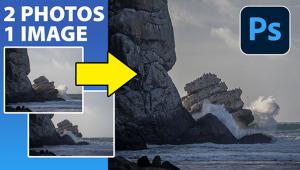Who’s A Big Softie? Deliberately Spoiling The Definition Of Your Pictures
There are plenty of reasons to eschew perfect sharpness. A classic application was to suppress lines and wrinkles, or just for a light, airy mood: as Tallulah Bankhead once said, “They used to photograph Shirley Temple through gauze. They should photograph me through linoleum.” Another reason is to create the sense of something half-remembered, imperfectly limned in the picture as in the memory; or there can be nostalgia, which is closely related. There are pictures in which tonal masses, or the impression of speed, or some other factor, are more important than fine detail.
 |
|
|
Of course, it is entirely possible to overuse softness, just as it is possible to overuse anything in photography: shallow depth of field, grain (and its successor, digital noise), oversaturated color, undersaturated color, HDR—you name it. But for the right picture, well-considered softness can be just what you need.
When I added it up, I found at least seven ways to reduce sharpness, and I’ve tried most of them over the last 40 years—for portraiture, sometimes persuading others to use me as their subject. Each technique has its place, and each is different from the next. You can choose poor focus; camera shake, shading into blur; soft-focus lenses, purpose-designed or improvised; screens of various kinds (preferably not linoleum); grain; exposure control; and postproduction, which is an article in itself. With all these options, it is a legitimate question why anyone would bother to use either purpose-made or improvised soft-focus lenses; but there are legitimate answers.
The two that immediately spring to mind are simplicity and repeatability. Simplicity, in that there is a minimum of postproduction, and repeatability, in that once you are used to your soft-focus lens, you can rely on setting the aperture and getting the effect you want: dusty lenses, greasy filters, camera shake, and the like are not outstandingly repeatable.
Third, each technique (or lens) has a unique look. It is all very well to say that you can approximate to a particular effect in another way, but approximation is not the same as, well, the same.
 |
|
|
The fourth and perhaps the most compelling reason is that it’s fun. There’s no sense in shooting everything in soft focus in the hope that it will work, but equally, there is an esthetic, emotional, and intellectual challenge in producing pictures where soft focus is an integral and essential part of the image.
 |
|
|
With this in mind, what are the over-the-counter solutions? Well, the US-made Lensbabies have been extensively reviewed in these pages, but the German-made Subjektiv lens set (www.monochrom.de) offers a different-but-the-same approach via a superbly engineered rigid focusing mount instead of the Lensbaby “push-me-pull-you” (more repeatability again). The Dreamagon, also German, has recently been discontinued but a few “new, old stock” lenses were being “outed” from Monochrom (www.monochrom.de again) for 99 euros (about $145) in late 2009. On the used market, you can find an extraordinary variety of soft-focus lenses for a wide range of formats, ranging from the magisterial Rodenstock Imagon for large formats via the semi-legendary Leitz Thambar for the Leica to the late Fred Spira’s Spiragon.
The trick with a soft-focus lens is to render a point of light as a point-plus-a-halo. In other words, a point isn’t represented as a blob of light (as it is with an out-of-focus image) but as a more-or-less sharp image (generally less) with the light “bleeding into” the surrounding area—and, inevitably, reducing contrast and resolution of fine detail. This is why deep lens shades are a good idea with any soft-focus lens, to control unwanted flare. As already noted, quick, easy contrast control in postproduction is one reason why digital soft focus is in many ways more attractive than film.
 |
|
|

















































